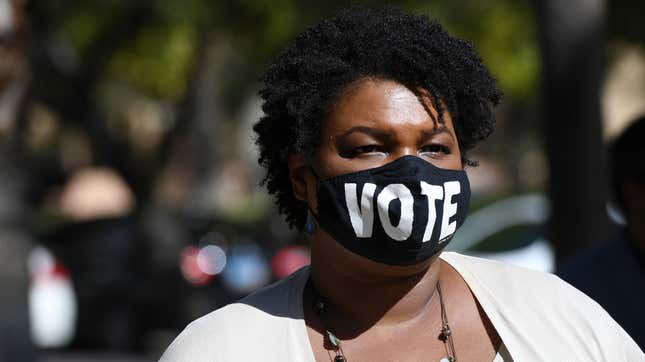Stacey Abrams Was Absolutely Right About Georgia
Politics

In the early hours of Friday morning, Joe Biden pulled ahead of Donald Trump in Georgia, which hasn’t gone blue since Bill Clinton’s first term, in 1993. For years, there’s been the tantalizing prospect that the changing demographics of Georgia would put the state back into the Democrats’ column, or at least make it competitive. That never quite proved true—until now. Stacey Abrams was absolutely right about Georgia being competitive, and she played a big part in proving it.
In 2018, after Abrams lost her Georgia gubernatorial run she sat down with her campaign manager Lauren Groh-Wargo and together, they made a plan. The loss to Brian Kemp (who, as secretary of state, conveniently oversaw the election) had been decided by a slim 54,723 votes. Forget some far-off date, Georgia would be competitive for Democrats now, they argued; forget chasing the much-mythologized swing voter, the state was increasingly diverse and could be won “by investing big and investing early in registration, organizing, and turnout” among voters of color and liberal whites. In Georgia, Democrats quite simply needed to put absolutely everything they had into getting every last Democratic-leaning voter to the polls, and they could win. They founded an organization dedicated to the purpose, Fair Fight, and Abrams used her national profile to raise millions.
Forget some far-off date, Georgia would be competitive for Democrats now, they argued
Abrams made her case again and again through the 2020 presidential campaign, even as Fair Fight registered tens of thousands of voters. By the end of the race, polls were so tight that Joe Biden made a visit to the state the week before the election, when he visited Warm Springs, Georgia to evoke the ambition of FDR. Even former President Barack Obama visited, the day before the election.
-

-

-

-

-

-

-

-

-

-

-

-

-

-

-

-

-

-

-

-

-

-

-

-

-

-

-

-

-

-

-

-

-

-

-

-

-

-

-

-








































